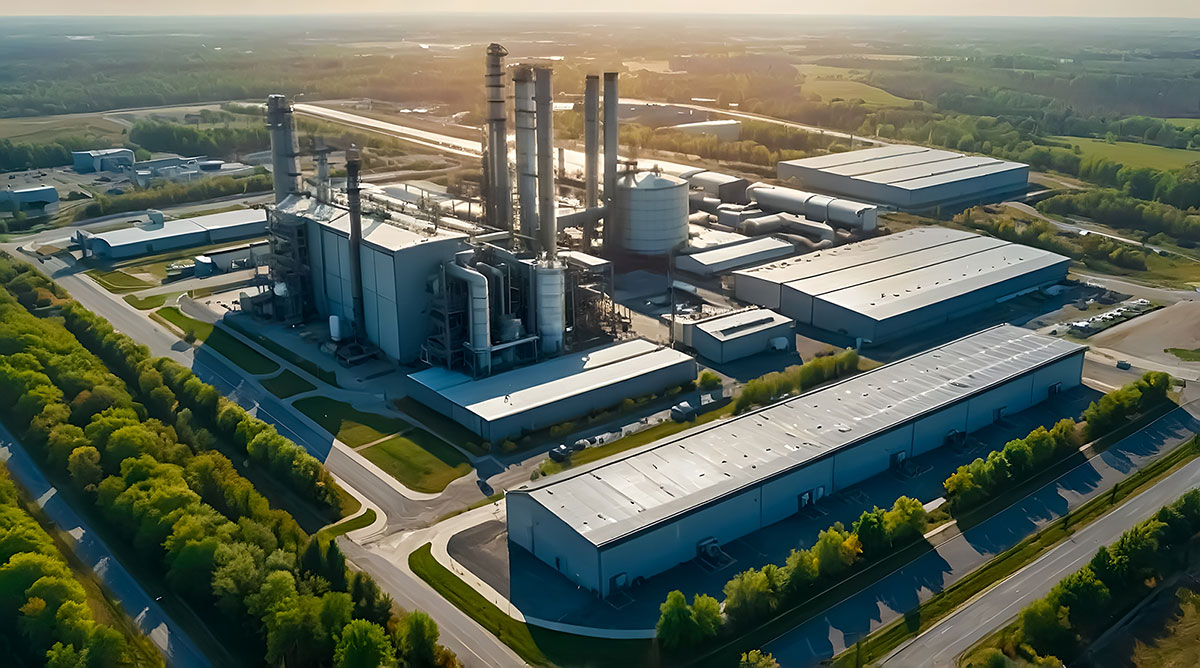
CASE STUDIES: Industrial Transformers: The Hidden Vulnerability in Modern Manufacturing
Industrial transformers are some of the most vulnerable assets in modern manufacturing. They power high-intensity operations across industries such as food processing, steel and petrochemicals. These transformers face unique and demanding conditions. Frequent load cycling, temperature extremes, power fluctuations, vibration and long periods of peak operation all accelerate wear and increase the risk of failure. When a transformer goes down, the consequences extend far beyond a power loss:
- Production shutdowns
- Safety risks
- Environmental hazards
- Financial losses that can reach millions
The greater challenge is that traditional oil sampling and manual inspections often miss early warning signs of degradation, leaving operators with a false sense of security. With transformer replacement times now exceeding 15 months, early detection is vital. Hydrogen gas is the first and most reliable indicator of insulation breakdown, providing operators with a crucial early signal to act before failures occur. Real-world cases show that continuous hydrogen monitoring enables proactive maintenance, helping facilities prevent downtime, protect workers, and safeguard profitability.
When Reliability Fails: The Hidden Risks in Industrial Energy Systems
Facility type: Oil Refinery
Issue: Transformer failure
Summary: BP’s 435,000-barrel-per-day Whiting refinery in Indiana—the company’s largest in North America—was forced to shut down after a transformer failure caused a plant-wide power outage. All but essential staff were evacuated in what sources described as the largest evacuation in years. The outage immediately lifted gasoline and diesel prices by more than 20 cents a gallon after the refinery shut down. Canadian crude prices rose due to concerns about reduced demand. Restarting full production took two months.
Cause: BP did not publish the findings

Facility type: Steel Mill
Issue: Transformer failure
Summary: ArcelorMittal experienced a series of damaging power failures at its Lázaro Cárdenas, Mexico, steel mill in July 2025, leading to critical equipment failures and a temporary shutdown of the site’s main blast furnace. The power cuts caused damage to the Electric Arc Furnace (EAF), which is extremely power-intensive and central to steelmaking, forcing the company to initiate a lengthy maintenance outage and leading to the suspension of its long steel production for the remainder of the year and losses of over $40 million.
There had also been another shutdown in March of 2024 due to a transformer failure in one of its four electric furnaces.
ArcelorMittal had previously experienced a shutdown at its facility in Indiana in 2015 due to a transformer failure.
Cause: It was damaged as a knock-on effect of external power cuts. When grid power fluctuated or dropped, it created stresses (voltage dips, surges and imbalance) that cascaded into critical plant equipment, including the transformer, until it failed.
Facility type: Data Center
Issue: Transformer failure
Summary: An outage at Fujitsu’s Sunnyvale, California data center disrupted its U.S. cloud services, including public and private cloud offerings, after a major transformer station failure caused a power distribution breakdown. Despite the site’s multiple backup systems—diesel generators, UPS units and even hydrogen fuel cells—the incident left customers facing downtime that, in some cases, lasted several days. The incident raises questions about the robustness of backup and redundant systems in critical data infrastructure.
Cause: Transformer failure at a distribution center
Facility type: Polymer Manufacturing
Issue: Transformer fails due to moisture entering insulating liquids and releasing hydrogen
Summary: A blast and subsequent fire broke out near a 90,000-volt oil-filled measurement transformer at a technical polymers facility. Operators quickly secured the site, switching to a backup line and a 15,000-volt transformer with the support of the grid operator to maintain the power supply. Because of the danger posed by falling electrical lines, the nearby highway was shut down as firefighters deployed protective equipment.
Cause: The accident was traced to a hydrogen release from the transformer oil—likely from heating—followed by ignition and explosion. Investigators believe moisture entered the oil, with two possible causes identified: inadequate steaming of the absorbent paper or errors during the oil replacement process.

Facility type: Chemical Production
Issue: Transformer failure
Summary: A transformer fire broke out at the Air Liquide facility in Pasadena, Texas, following a power outage that affected several Ship Channel sites. The incident resulted in a partial shutdown of affected operations and led to street closures as emergency crews responded. Because of the loss of power, nearby facilities experienced increased flaring, adding urgency to the situation. Air Liquide — which produces specialty gas mixtures including flammable compounds like butene, butadiene and acetylene — was subject to continued on-scene air quality monitoring.
Cause: Not released
Facility Type: Nuclear Power Plant
Issue: Transformer fire
Summary: A main transformer at Indian Point’s Unit 3 short-circuited due to insulation failure in a high-voltage winding coil, sparking a fire that released dielectric fluid. Firefighting water and foam combined with the fluid exceeded the containment moat’s capacity, allowing an estimated 3,000 gallons to reach the Hudson River through storm drains. Previous routine maintenance had not indicated any problems.
Cause: Insulation failure
Facility Type: Solar Plant
Issue: Twenty transformer failures in six months
Summary: A major solar power plant in Europe suffered over twenty transformer failures within six months, prompting a complete, multidisciplinary investigation. The analysis included transformer inspections, on-site measurements, network simulations and a manufacturing process audit, along with dielectric and moisture content testing of insulation materials from failed units. This integrated approach helped pinpoint the root causes which were related to various events, including insulation breakdown.
Cause: The failures were caused by a combination of insulation breakdown from moisture and dielectric stress

Industrial transformer failures reveal a clear trend: reactive maintenance and periodic sampling are no longer sufficient to protect critical power infrastructure. Failures—whether caused by grid disturbances, moisture ingress, manufacturing flaws, or operational stress—create ripple effects that reach far beyond a single site. The visible costs include production stoppages, safety evacuations, and supply chain disruptions, while the hidden costs—lost contracts, reputational damage, higher insurance premiums, and regulatory exposure—can be even more severe.
With transformer replacements now taking 15 months or more amid global supply challenges, extending asset life through continuous condition monitoring has become essential. Early hydrogen detection using cost-effective, continuous monitoring solutions like the GRIDSCAN® 5000 gives operators real-time insight to act before failures occur. The GRIDSCAN 6000 is the first monitoring solution to combine 4 critical measurements, hydrogen, moisture, pressure and temperature, into one, easy-to-install device. In environments where every minute of downtime costs thousands, continuous hydrogen monitoring isn’t just a safety measure—it’s a strategic investment in operational resilience.


